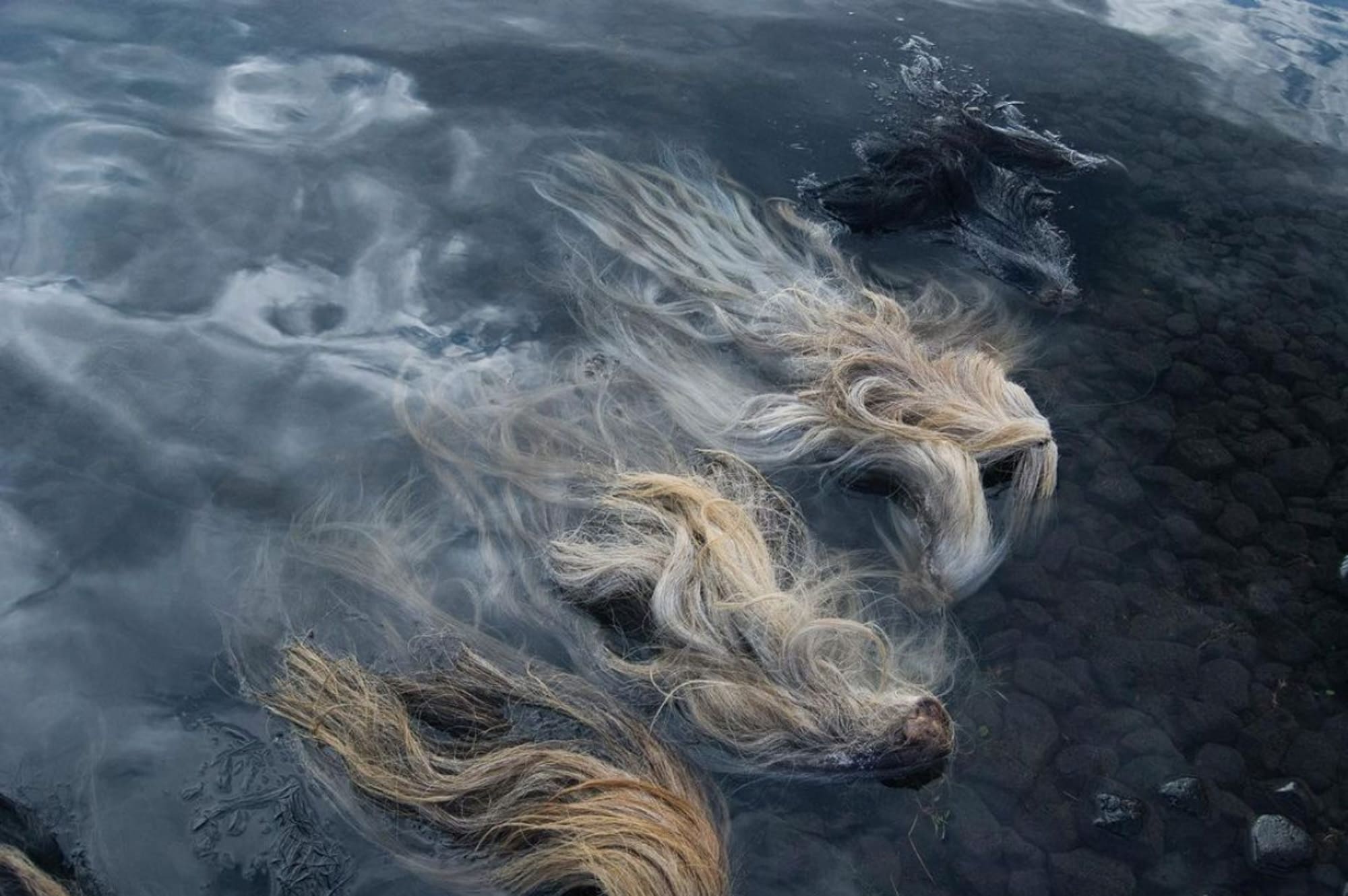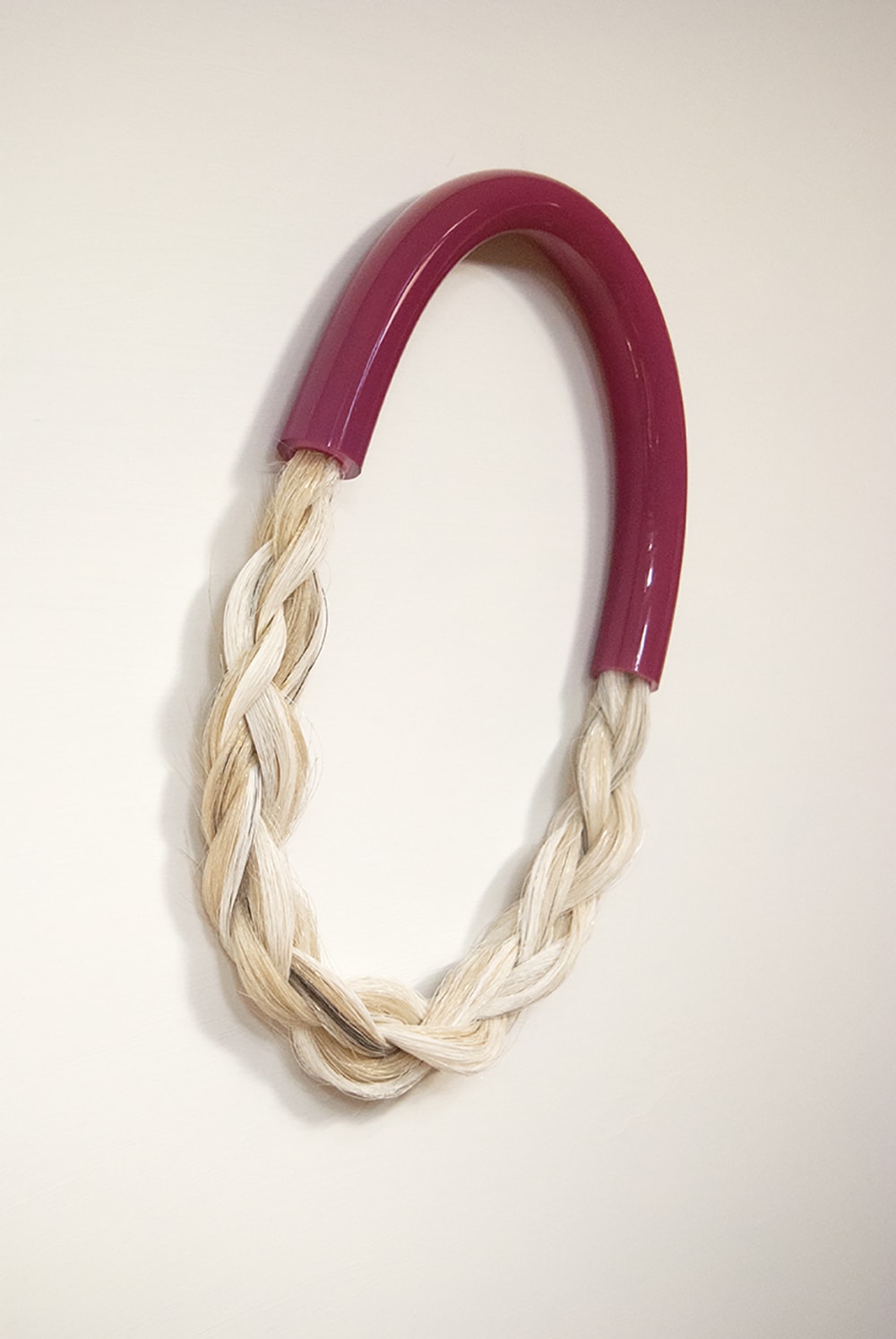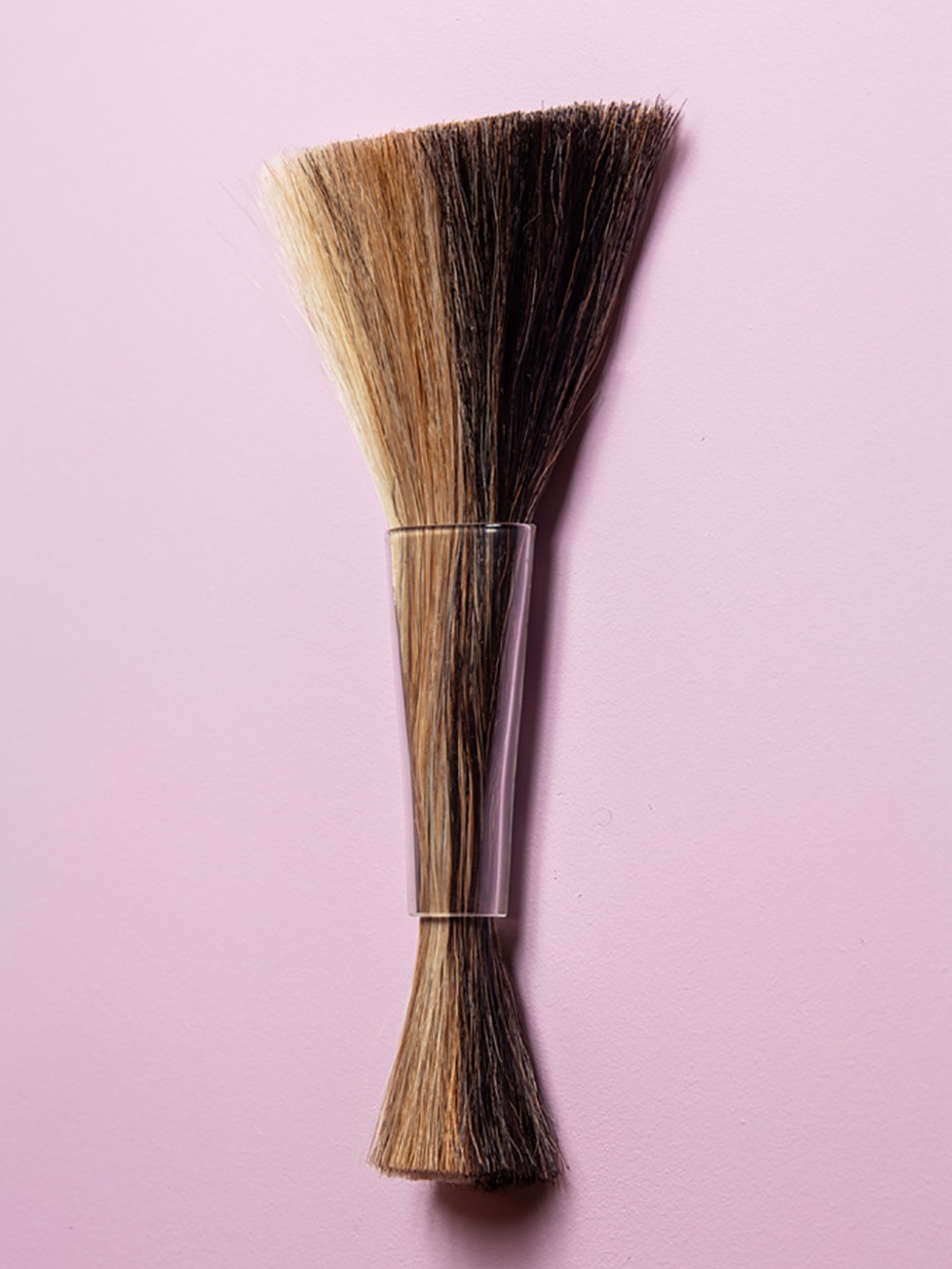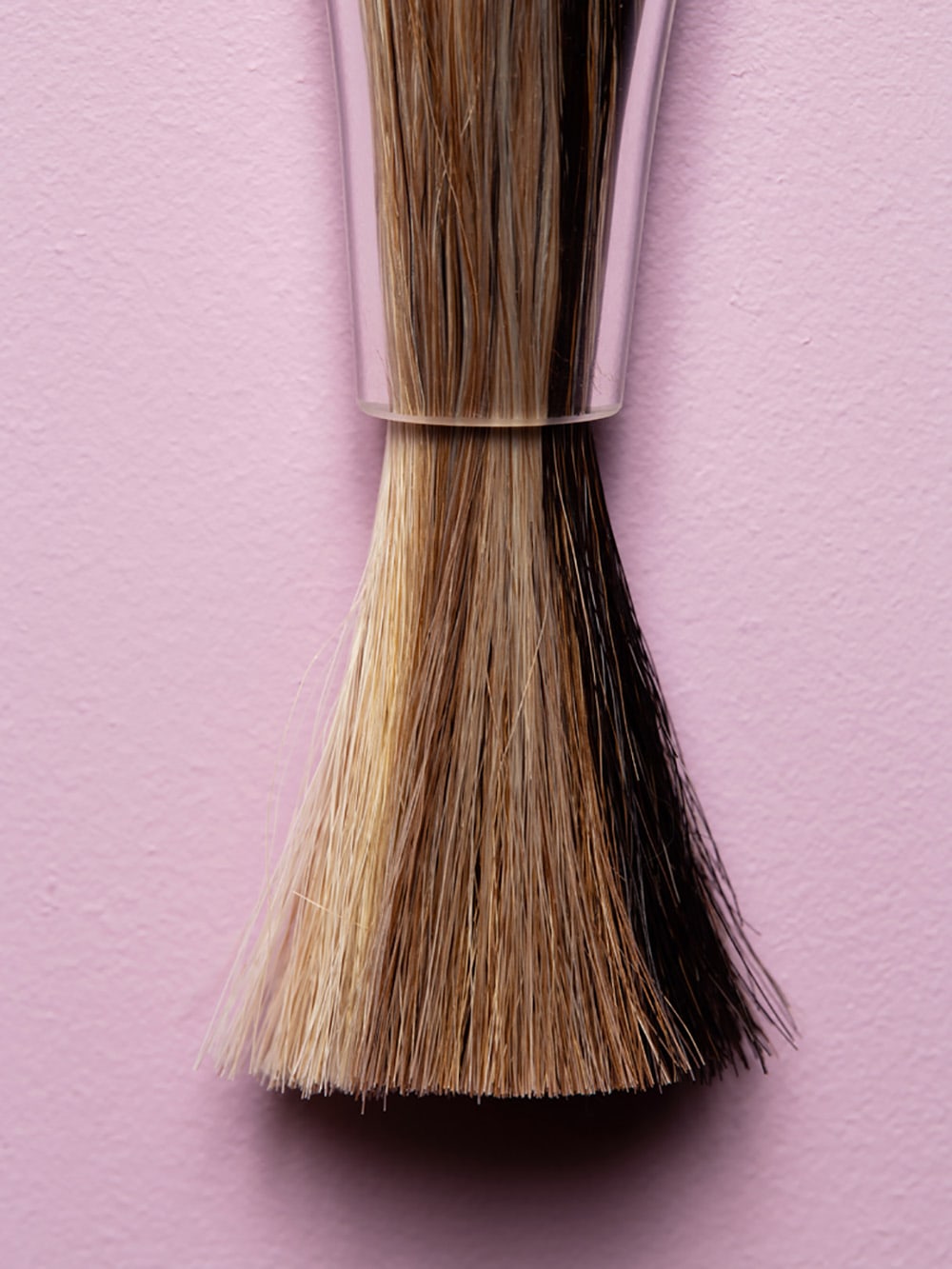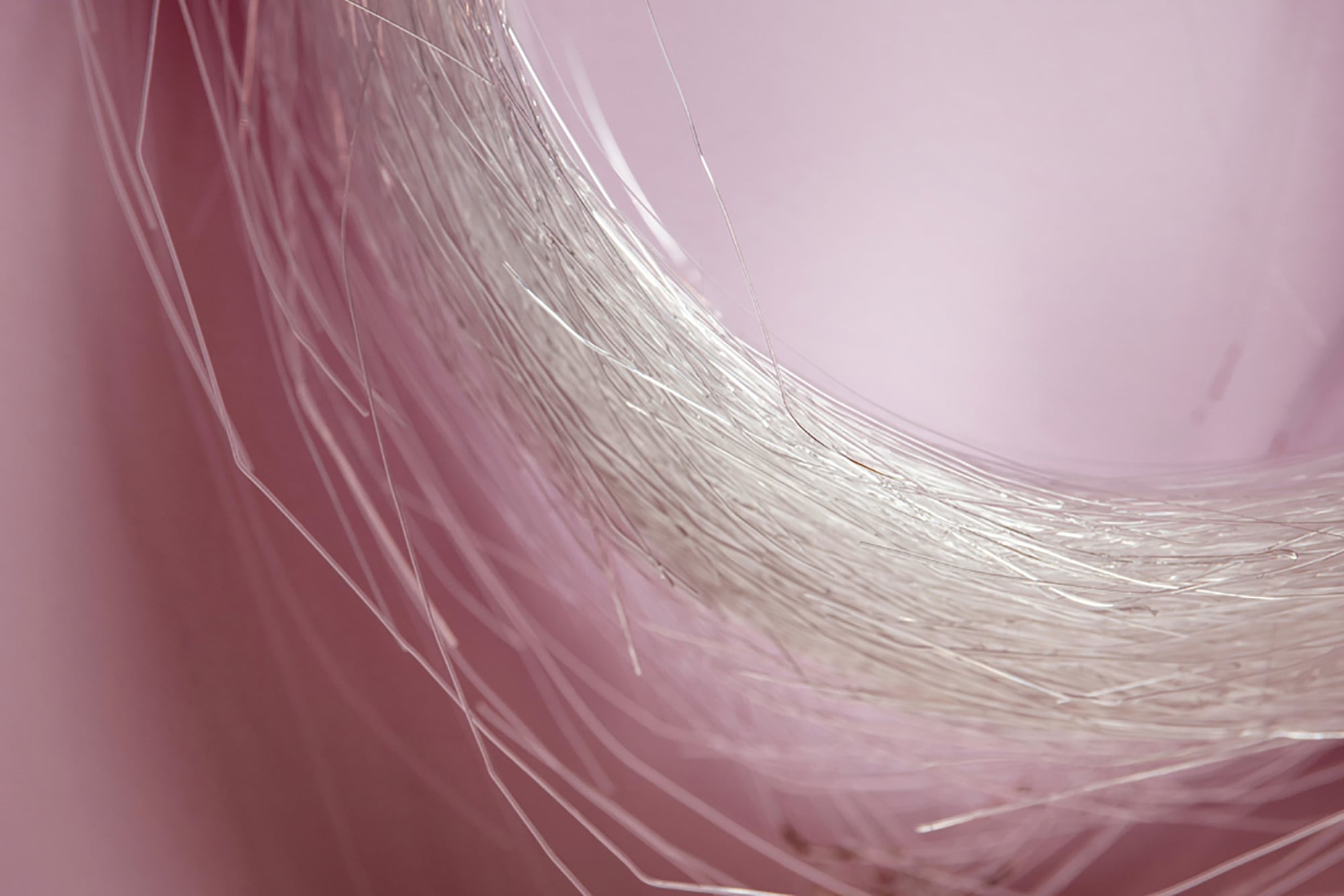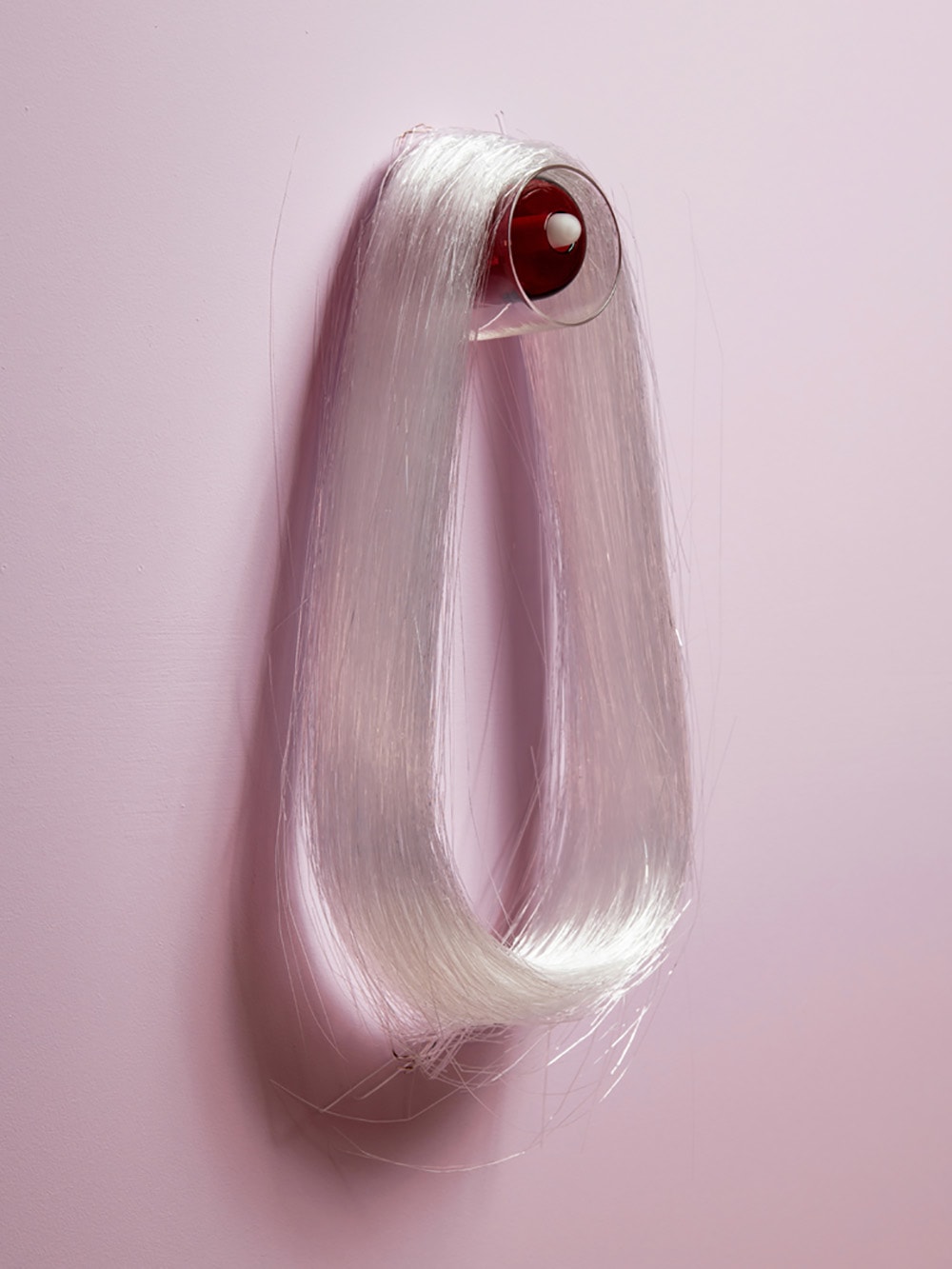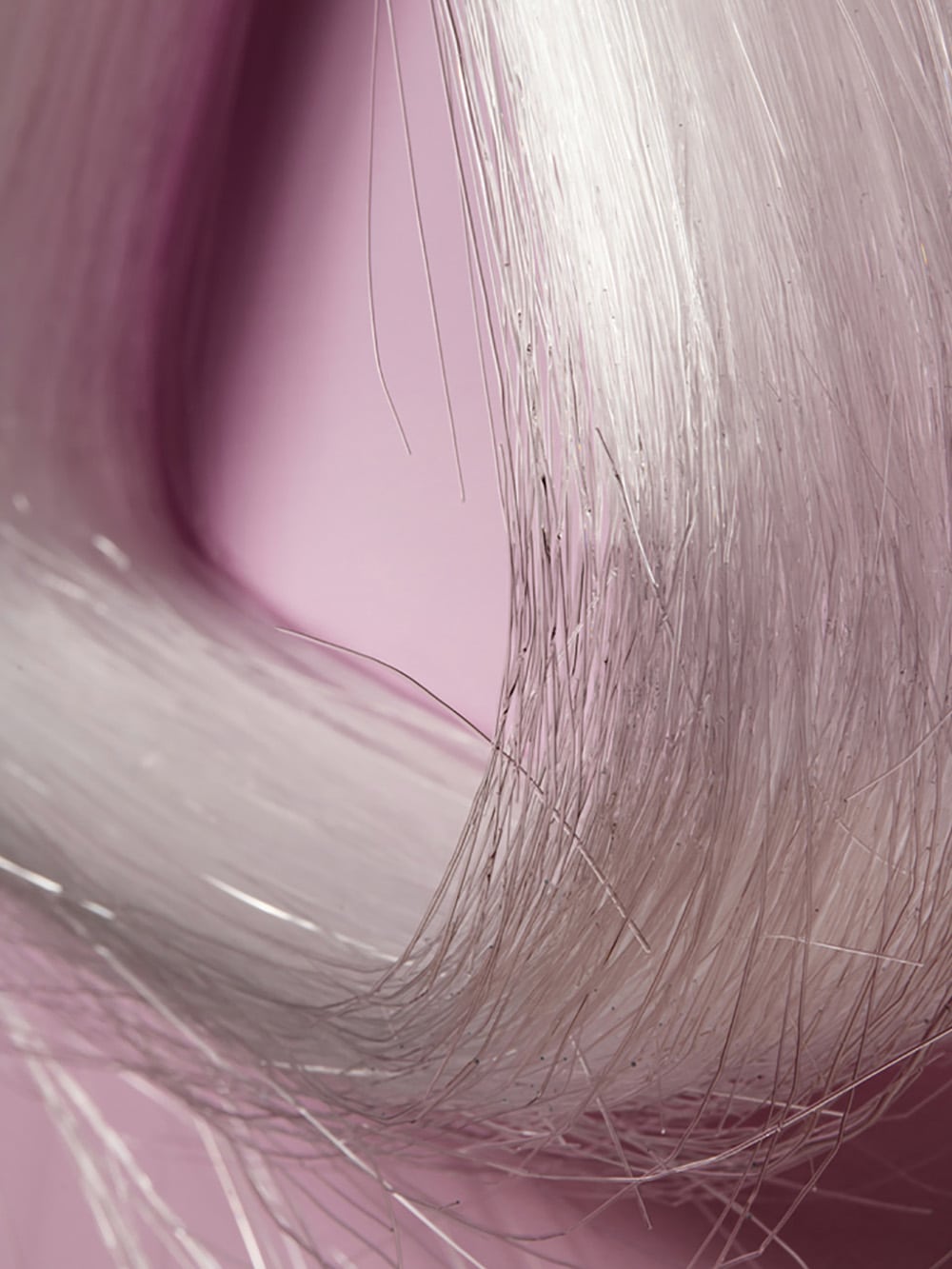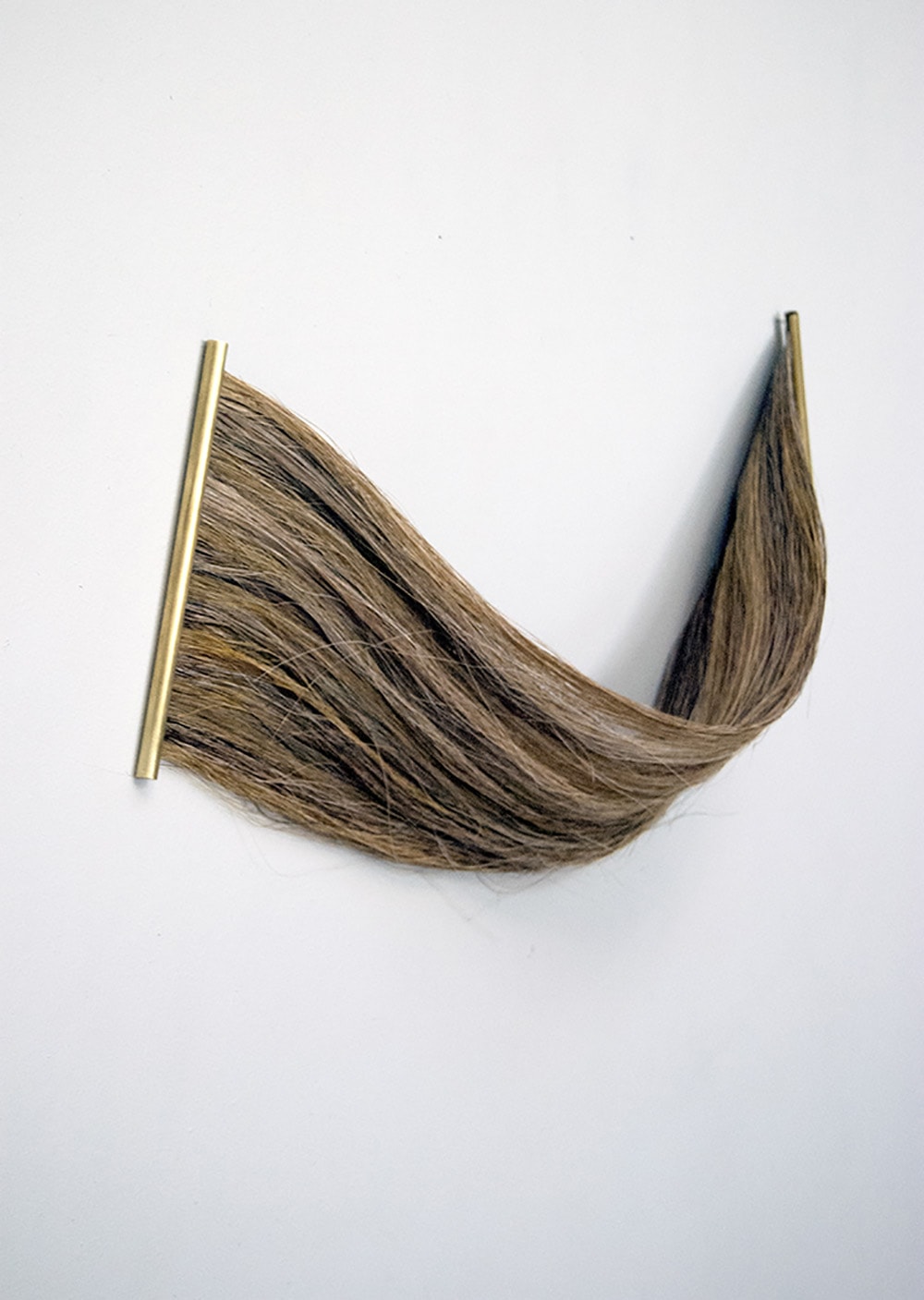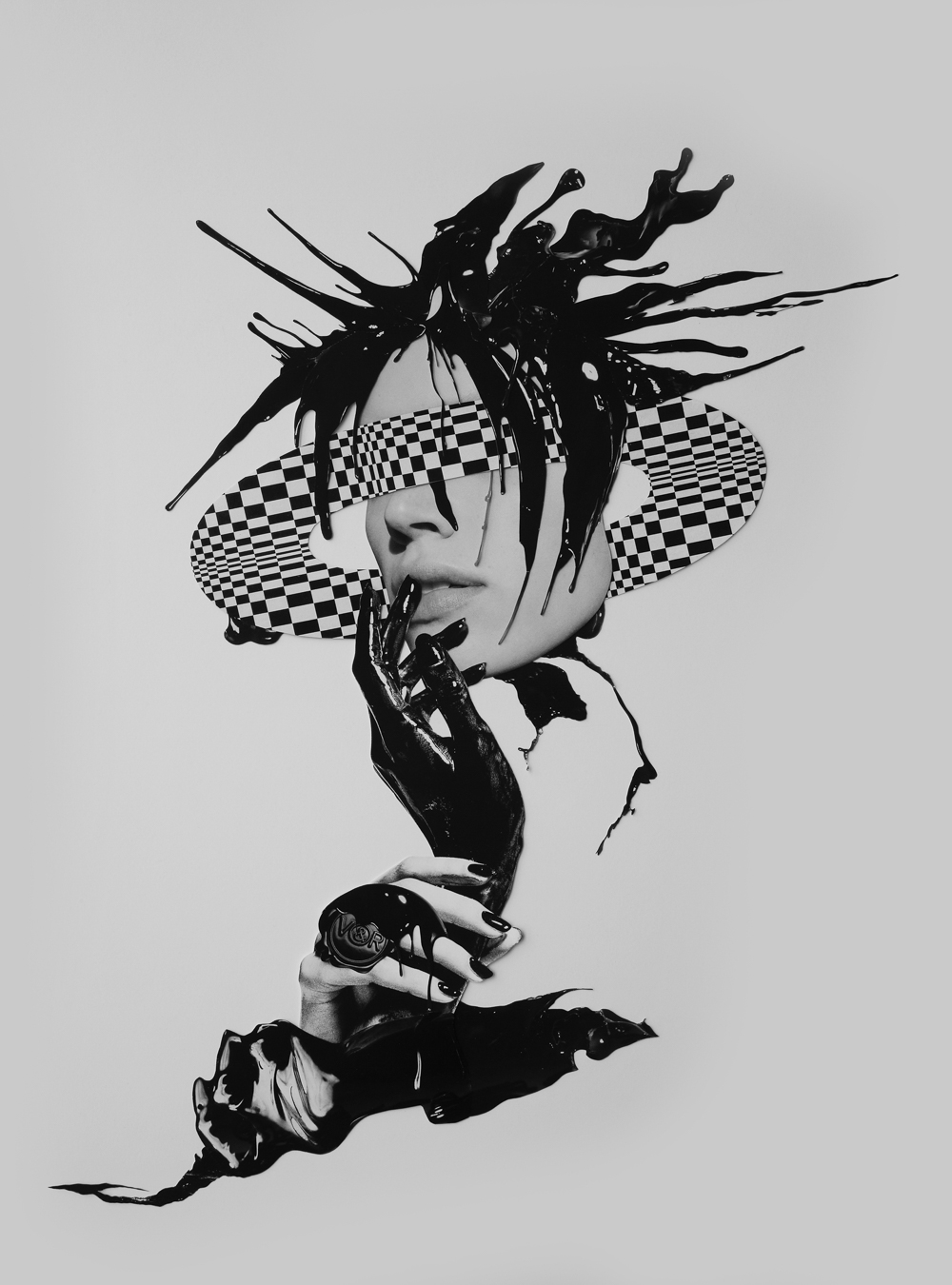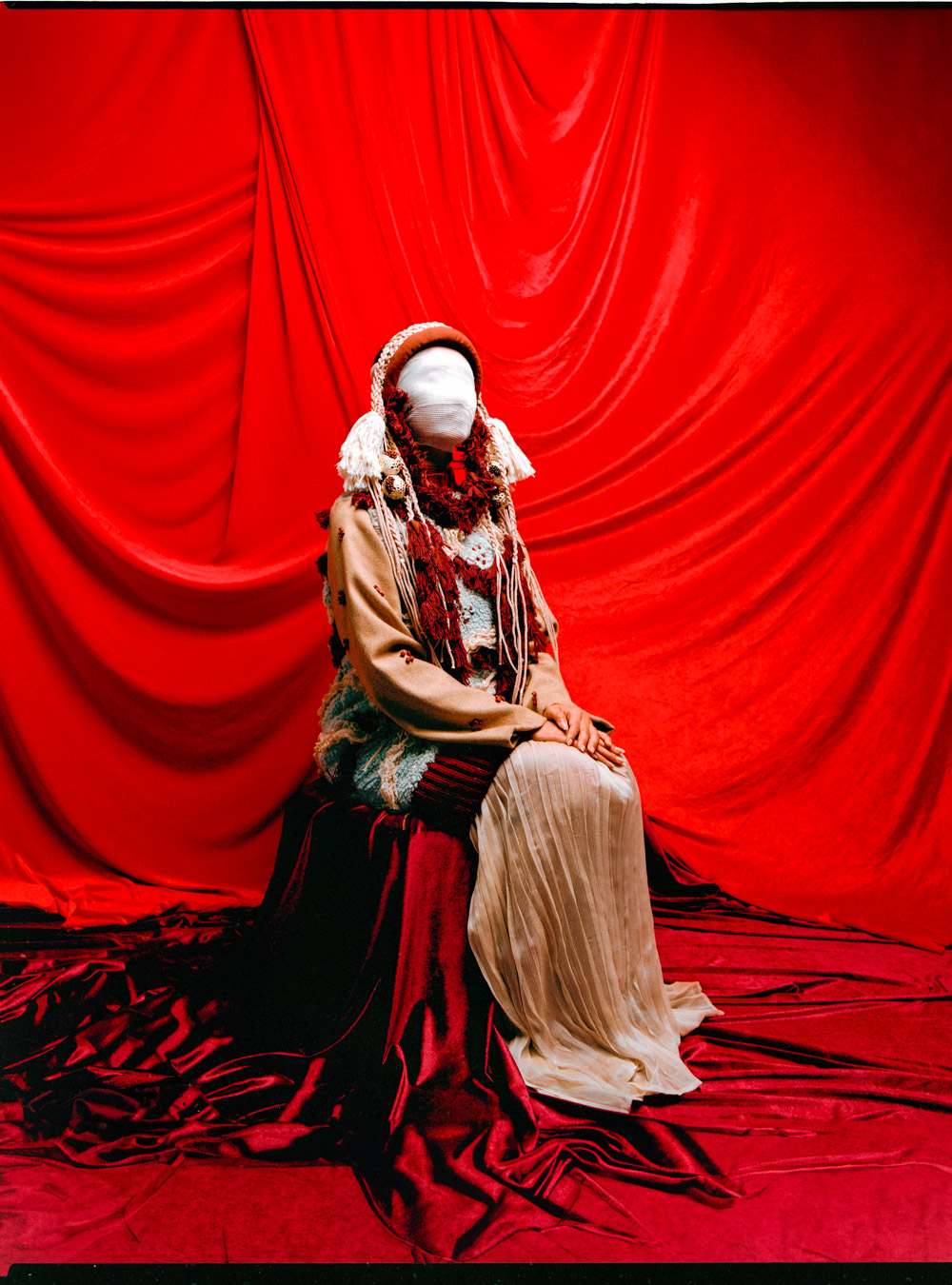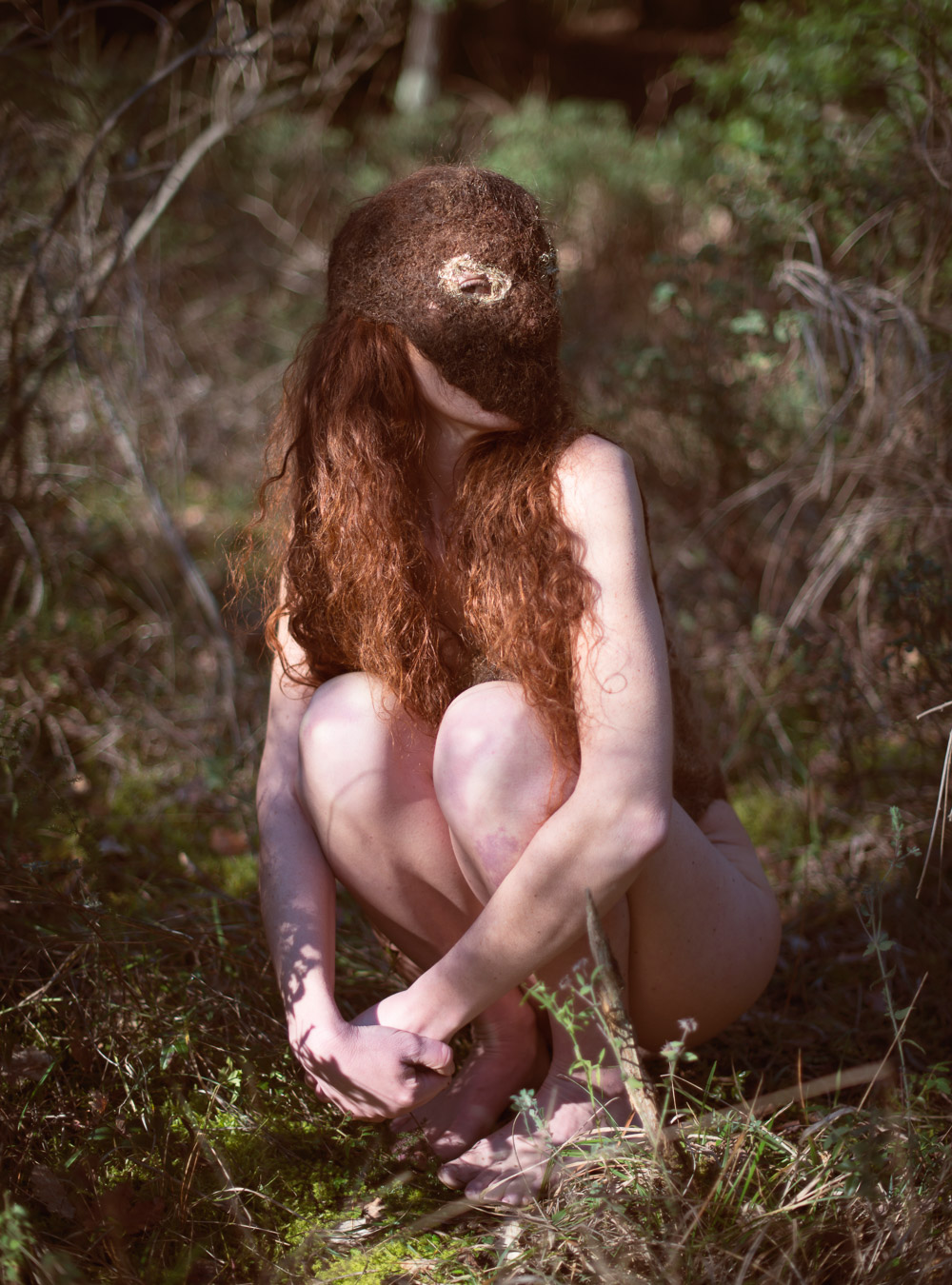- Carissa Baktay
- Carissa Baktay
- Carissa Baktay
EDITORIAL: Carissa Baktay’s hairy glass sculptures explore femininity, technical boundaries and humour
Artworks: Carissa Baktay
Photography: Marinó Flóvent, Carissa Baktay
Interview: Katharina Lina
Rigid yet pliable; inanimate versus a physicalised history of life – at first Carissa Baktay’s works seem to juxtapose glass and hair; but glance again and the contrasting materials begin to fuse and harmonise with each other. Originally from Canada, the glass artist and sculptor currently resides in Reykjavik, Iceland where she pursues her artistic career full time and teaches dance. When work isn’t calling, Baktay loves being in nature and going on ‘walks’, as she describes, “A situation where I go outside and stare at the ground, looking for treasures. There are so many overlooked and under-appreciated beautiful things, and I want to see them all. Not too many people will go on a walk with me anymore… Make sure you have a lot of time and don’t count on us reaching a destination!” We speak to Baktay about her connection to nature and dance, history in hair, and womanhood.
In what ways did your creativity manifest itself in your life when you were younger? I was always creative and my parents were too. They crocheted and nurtured beautiful flower gardens. I didn’t know I wanted to be an artist until my teens; as a child I decided I was going to be a scientist and cure cancer, and in my pre-teens when the math classes started getting harder I started apprenticing at a hair salon where I worked for a number of years. Hair, thread and line have always been somewhere in the back of my mind but when I started visiting Iceland, hair really made a reappearance in my practice.
"I like to combine hair and glass to create invisible forms that both constrain and form the shape of the hair into something that would be impossible without it"
What are some of your favourite sources for creative inspiration? I am definitely inspired by nature, any sort of natural surroundings. Things that you have to look deeply at – small, overlooked things – a stone with a tiny stone cradled into it, placed there by the wind, or the flow of a plant moving around an obstacle. I also find inspiration in bodies and movement; shapes growing, pulling and flexing, mimicking happenings that go unseen in nature. Bodies in space influence a lot of my forms, as well as my processes. I notice them both in my dance practice as well as the process of glassblowing, which is in itself a dance – a physical act with attention to the body and fluidity in space.
As an artist working with glass, what drew you to working with hair? When I started spending more time in Iceland I didn’t have the means to make glass work. Much of my glass was very process-based; using glass thread to explore line and texture, and creating works whose forms were the result of an experimental process. I started using hair as a material proxy for glass thread. I rescue hair from the commercial meat industry and spend hours upon hours washing, combining and very intimately nurturing it to bring it back to a beautiful, lustrous material. In a way, I feel I am honouring the past owner of the hair by caring for it and making it into something beautiful again. I think that hair is so seductive and also interesting in the dichotomy of feelings it invokes. Most cultures prize long, shiny strong hair when it is on the head, but it is seen differently when it is on other parts of the body or dismembered. This push/pull of the material really excites me.
"Where the intensity of glass forces me to be in that moment and move my body to a dance with the material in the present, working with hair allows my thoughts to wander much more"
What meaning does hair carry for you? Hair interests me on so many levels as a material that’s heavy with cultural conceptions. It is definitely not a neutral material. Its beauty, its disgust, the cultural aspects, body ownership and ideas based around conceptions of femininity all interest me. It’s been a very intimate process, and also one of vulnerability, to work with hair. It brings me back to an earlier life when I worked with hair at the salon, and the tenderness and uncertainty of youthful femininity, coming of age, and my own body as a girl coming into to the spring of my womanhood.
How do you find working with hair as a material in comparison to glass? Where the intensity of glass forces me to be in that moment and move my body to a dance with the material in the present, working with hair allows my thoughts to wander much more. It’s a process that builds intimacy with a material that feels more soft, more tender, and that in turn shapes the compositions. I love the immediacy of glass- the excitement and heat, the smells and sounds of the studio, as well as the technical explorations, and to some extent, the material boundaries. I am also drawn to exploring to which extent I can push them and change how the material is understood. In those moments of material surprise, an initial misunderstanding or change in material perception (glass looking like plastic or nylon thread) I hope to draw the viewer in and present them with a different idea of materials than what they are used to.
Tell us a bit about your thought process behind the Soft Machine series, and the toilet roll piece. I like to combine hair and glass to create invisible forms that both constrain and form the shape of the hair into something that would be impossible without it. I think that conceptually there is a lot that can be said about that from a bodily, most specifically female body, standpoint. Glass has often been used to reference female forms, even in its vocabulary – foot, leg, neck of a vessel, a vase’s smooth curvaceous waist. My most recent glass thread works from Soft Machine are definitely in conversation with my hair work and I’ve been creating shapes and colours that also reference the female body.
I think it is fun to make work that uses an impossible material/form combination such as the hair toilet paper, and have it serve as just that. Since the pandemic I have been forcing myself to make more sketch like, reactive work and it has been freeing. Power Pants is another example of this as well as my series of masks.
- ANTHROPOLOGY OF HAIR
- ANTHROPOLOGY OF HAIR
- ANTHROPOLOGY OF HAIR
- ANTHROPOLOGY OF HAIR
- ANTHROPOLOGY OF HAIR
